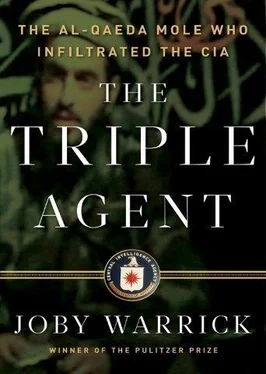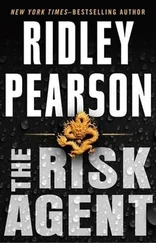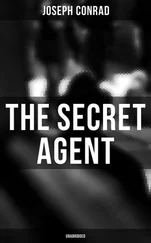
Quotations in this book that are designated by quotation marks are the recollections of individuals who heard the words as they were spoken. Italics are used in cases in which a source could not recall the precise language or when a source relayed conversation or thoughts that were shared with him by a participant in the events described.
LIST OF PRINCIPAL CHARACTERS
The White House
President Barack Obama
James L. Jones, national security adviser
John Brennan, chief counterterrorism adviser to the president
Rahm Emanuel, White House chief of staff
Central Intelligence Agency Headquarters, Langley, Virginia
Michael V. Hayden, CIA director, May 2006 to February 2009
Leon Panetta, CIA director, February 2009 to June 2011
Stephen Kappes, CIA deputy director
Dennis C. Blair, director of national intelligence
Amman, Jordan
Darren LaBonte, CIA case officer, Amman station, CIA station chief, Amman station (identity classified; name withheld)
Ali bin Zeid, captain, Jordanian General Intelligence Department (GID), aka the Mukhabarat
Ali Burjak, aka Red Ali, Mukhabarat counterterrorism chief, bin Zeid’s boss
Humam Khalil al-Balawi, physician and blogger
Khalil al-Balawi, Humam’s father
Defne Bayrak, Humam’s wife
In Afghanistan
Jennifer Matthews, CIA base chief, Forward Operating Base Chapman (“Khost”)
Harold Brown Jr., CIA case officer, Khost
Scott Roberson, CIA security chief, Khost
Dane Paresi, security contractor, Xe Services LLC, aka Blackwater, Khost
Jeremy Wise, security contractor, Xe Services LLC, aka Blackwater, Khost
Arghawan, Afghan detail security chief, Khost (last name withheld), CIA deputy chief of station, Kabul station (identity classified; name withheld)
Elizabeth Hanson, targeter, Kabul station
Al-Qaeda and the Taliban in Pakistan
Osama bin Laden, al-Qaeda founder and leader
Ayman al-Zawahiri, al-Qaeda’s No. 2 commander, deputy to Osama bin Laden
Osama al-Kini (given name Fahid Mohammed Ally Msalam), senior al-Qaeda commander for Pakistan
Abdullah Said al-Libi, an al-Qaeda operations chief, leader of al-Qaeda’s “Shadow Army” in Pakistan
Sheikh Saeed al-Masri (given name Mustafa Ahmed Muhammad Uthman Abu al-Yazid), al-Qaeda’s No. 3 commander
Baitullah Mehsud, leader of Pakistani Taliban alliance, Tehrik-i-Taliban Pakistan (TTP)
Hakimullah Mehsud, deputy TTP leader, cousin to Baitullah Mehsud
Atiyah Abd al-Rahman, al-Qaeda senior leader and Islamic scholar
Abu Musab al-Zarqawi (given name Ahmad Fadeel al-Nazal al-Khalayleh), Jordanian-born leader of al-Qaeda in Iraq, killed in U.S. missile strike in 2006
Abu Zubaida (given name Zayn al-Abidin Muhammed Hussein), first “high-value” terrorist operative captured by the CIA after the attacks of September 11, 2001, and the first to be subjected to waterboarding
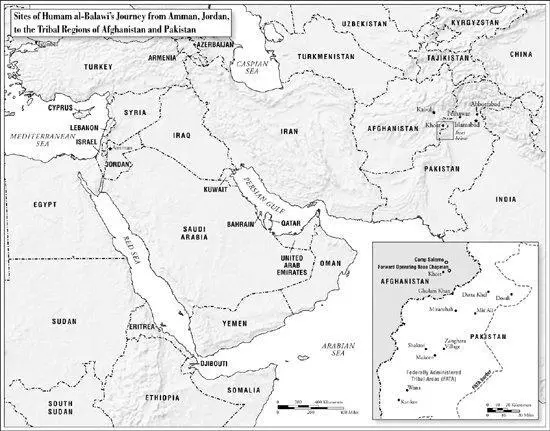
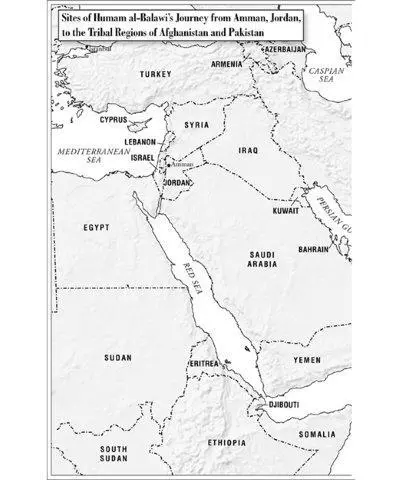
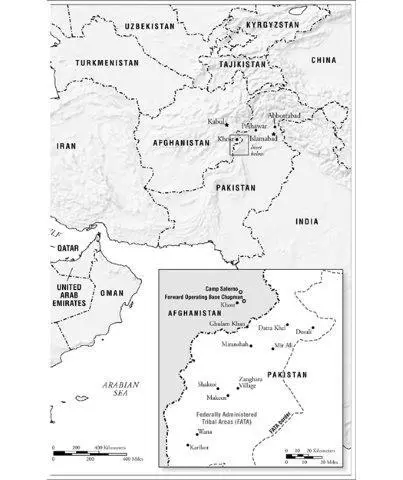
Khost, Afghanistan—December 30, 2009
For ten days the CIA team waited for the mysterious Jordanian to show up. From gloomy mid-December through the miserable holidays the officers shivered under blankets, retold stale jokes, drank gallons of bad coffee, and sipped booze from Styrofoam cups. They counted distant mortar strikes, studied bomb damage reports, and listened for the thrum of Black Hawk helicopters ferrying wounded. And they waited.
Christmas morning arrived on a raw wind, and still they sat. They picked at gingerbread crumbs in the packages sent from home and stared at the ceramic Nativity figurines one of the officers had set up in lieu of a tree. Then it was December 30, the last dregs of the old year and the tenth day of the vigil, and finally came word that the Jordanian agent was on the move. He was heading west by car through the mountains of Pakistan’s jagged northwestern fringe, wearing tribal dress and dark sunglasses and skirting Taliban patrols along the treacherous highway leading to the Afghan frontier.
Until now no American officer had ever seen the man, this spectral informant called “Wolf,” whose real name was said to be known to fewer than a dozen people; this wily double agent who had penetrated al-Qaeda, sending back coded messages that lit up CIA headquarters like ball lightning. But at about 3:00 P.M. Afghanistan time, Humam Khalil al-Balawi would step out of the murk and onto the fortified concrete of the secret CIA base known as Khost.
The news of his pending arrival sent analysts scurrying to finalize preparations. Newly arrived base chief Jennifer Matthews, barely three months into her first Afghan posting, had fretted over the details for days, and now she dispatched her aides to check video equipment, fire off cables, and rehearse details of a debriefing that would stretch into the night.
She watched them work, nervous but confident, her short brown hair pulled to the side in a businesslike part. At forty-five, Matthews was a veteran of the agency’s counterterrorism wars, and she understood al-Qaeda and its cast of fanatical death worshippers better than perhaps anyone in the CIA—better, in fact, than she knew the PTA at her kids’ school back home in Fredericksburg, Virginia. Hard-nosed and serious, Matthews was one of the agency’s rising stars, beloved by upper management. She had leaped at the chance to go to Khost in spite of the quizzical looks from close friends who thought she was crazy to leave her family and comfortable suburban life for such a risky assignment. True, she would have much to learn; she had never served in a war zone, or run a surveillance operation, or managed a routine informant case, let alone one as complex as the Jordanian agent. But Matthews was smart and resourceful, and she would have plenty of help from top CIA managers, who were following developments closely from the agency’s Langley, Virginia, headquarters. Their advice so far: Treat Balawi like a distinguished guest.
Matthews signed off on a security plan for the visit, though not without carping from some of the Special Forces veterans in her security detail. Her primary concern was not so much for the agent’s physical safety—the men with the guns would see to that—but rather for preserving his secret identity. The CIA could not afford to allow him to be seen by any of the scores of Afghans working at the base, except for the trusted driver who was now on his way to pick him up. Even the guards at the front gate would be ordered to turn away to avoid the risk that one of them might glimpse Balawi’s face.
Matthews picked a secure spot for the meeting, a gray concrete building in a part of the base that served as the CIA’s inner sanctum, separated by high walls and guarded by private security contractors armed with assault rifles. The building was designed for informant meetings and was lined on one side by a large awning to further shield operatives from view as they came and left. Here, surrounded by CIA officers and free from any possibility of detection by al-Qaeda spies, the Jordanian would be searched for weapons and wires and studied for any hint of possible deception. Then he would fill in the details of his wildly improbable narrative, a story so fantastic that few would have believed it had the agent not backed it up with eye-popping proof: Humam al-Balawi had been in the presence of al-Qaeda’s elusive No. 2 leader, the Egyptian physician Ayman al-Zawahiri, one of the twisted brains behind dozens of terrorist plots, including the attacks of September 11, 2001. And now Balawi was going to lead the CIA right to Zawahiri’s door.
Читать дальше
